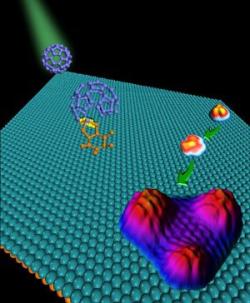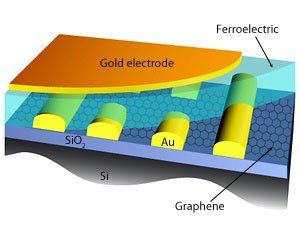Researchers created graphene quantum dots from C60 fullerene
Researchers from the National University of Singapore (NUS) and A*STAR developed a new method to create Quantum Dots from Graphene. The idea is to start with a C60 fullerene (a soccer ball like spherical carbon structure that costs of 60 carbon atoms) and 'open' them up (or decompose them) at high temperature using ruthenium as a catalyst.

The researcher performed the decomposition using a sparser coverage of fullerenes on the catalytic ruthenium surface than previously tried - which gave the fullerenes room to prevent carbon atoms from diffusing from one fullerene to the next.
